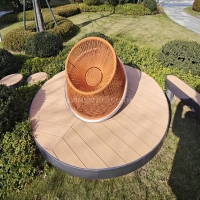Welcome to the website for landscape facilities products and knowledge.
What role does customer feedback play in the iterative design of these trash cans?
Customer feedback is a cornerstone of the iterative design process for modern trash cans, ensuring they evolve to meet real-world needs. By actively listening to users, designers identify pain points—such as odor control, durability, or ease of use—and refine prototypes accordingly. For instance, complaints about messy lids led to touchless sensor models, while sustainability concerns spurred modular designs for easier recycling.
This feedback loop doesn’t just solve problems; it uncovers opportunities. A suggestion about space-saving shapes might inspire a wall-mounted bin, while requests for smart features integrate apps for waste tracking. Each iteration balances practicality with innovation, driven by data from end-users.
Ultimately, this process transforms trash cans from passive containers into tailored solutions, proving that even everyday objects benefit from collaborative design. The result? Products that reduce frustration, promote eco-habits, and blend seamlessly into users’ lives—all because someone spoke up about their trash can.
Related search:

Recommendation
Swivel chair-Specialty steel structure woven rattan leisure chair with rotatable design